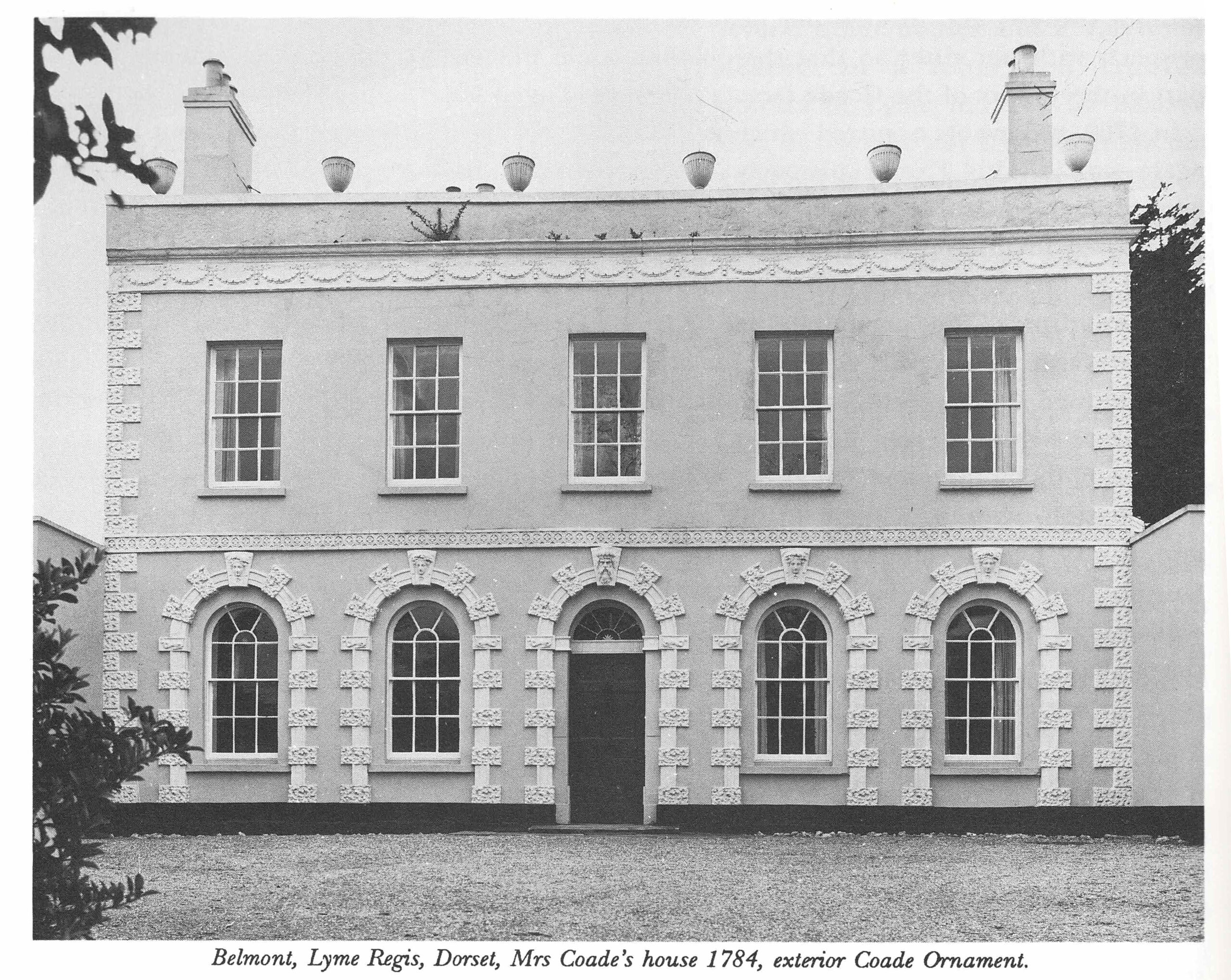At UK Architectural Heritage, we house a variety of unique pieces and have recently acquired a pair of genuine Coade stone urns. To appreciate what you could be buying from us, take a look at our in-depth overview of Coade and its history.
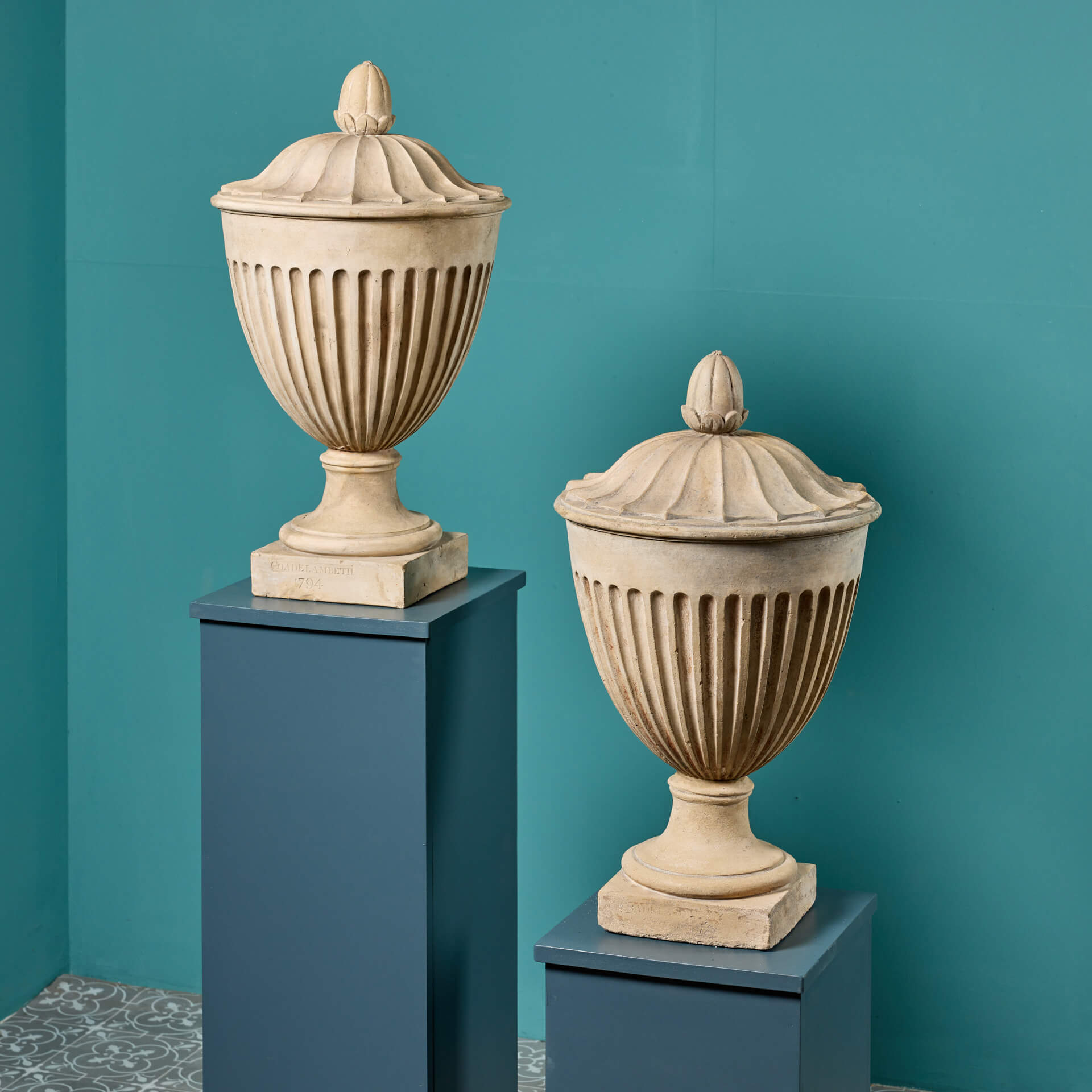
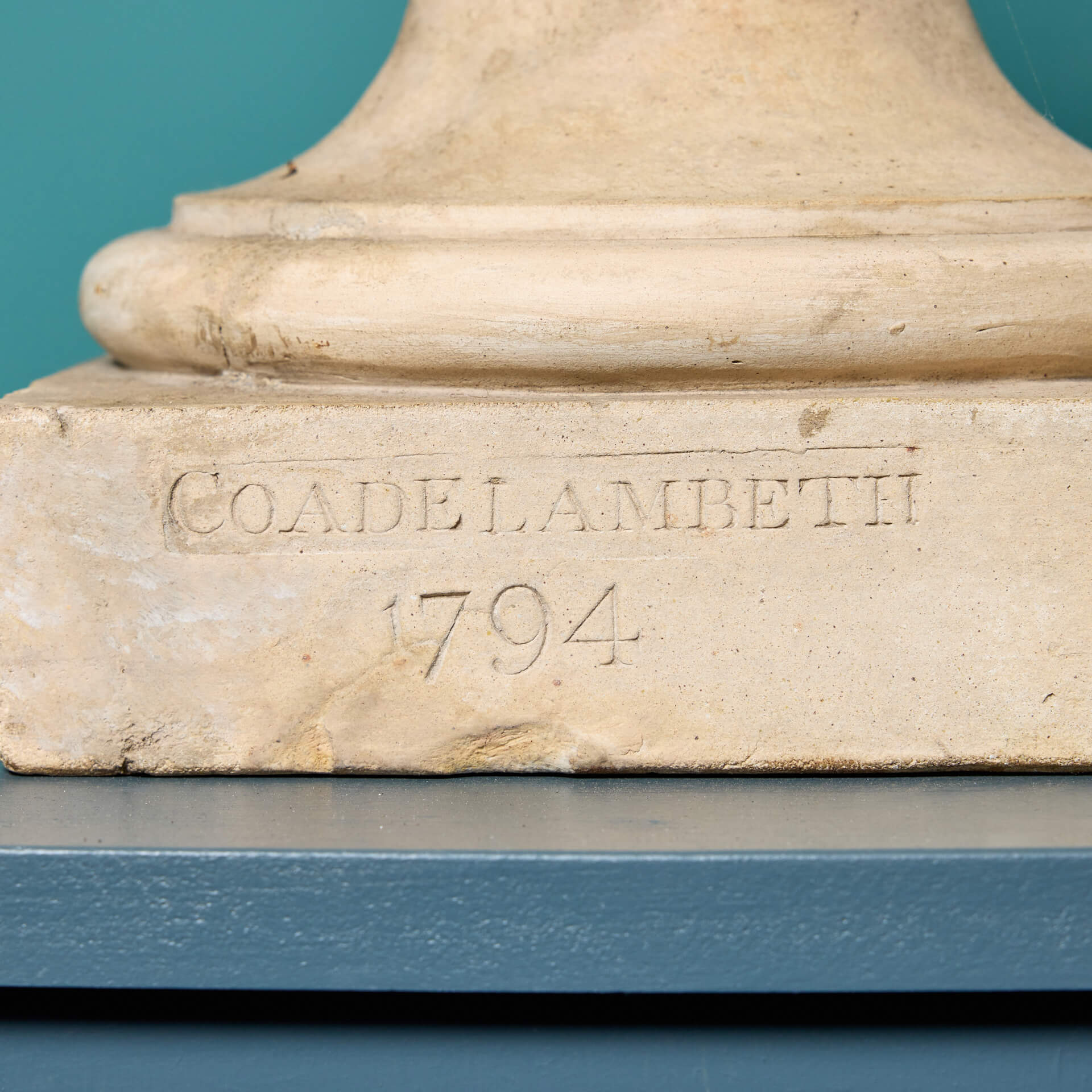
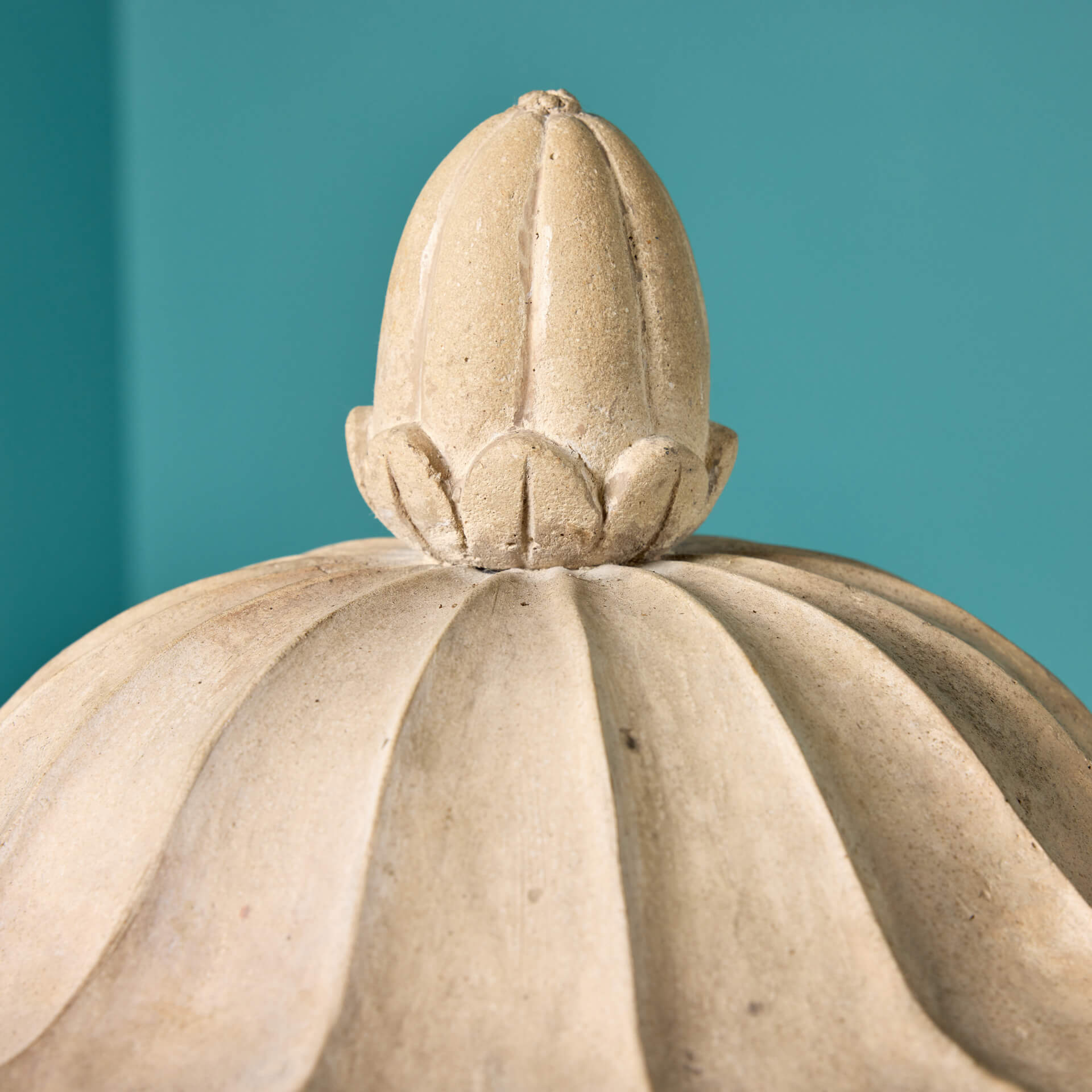
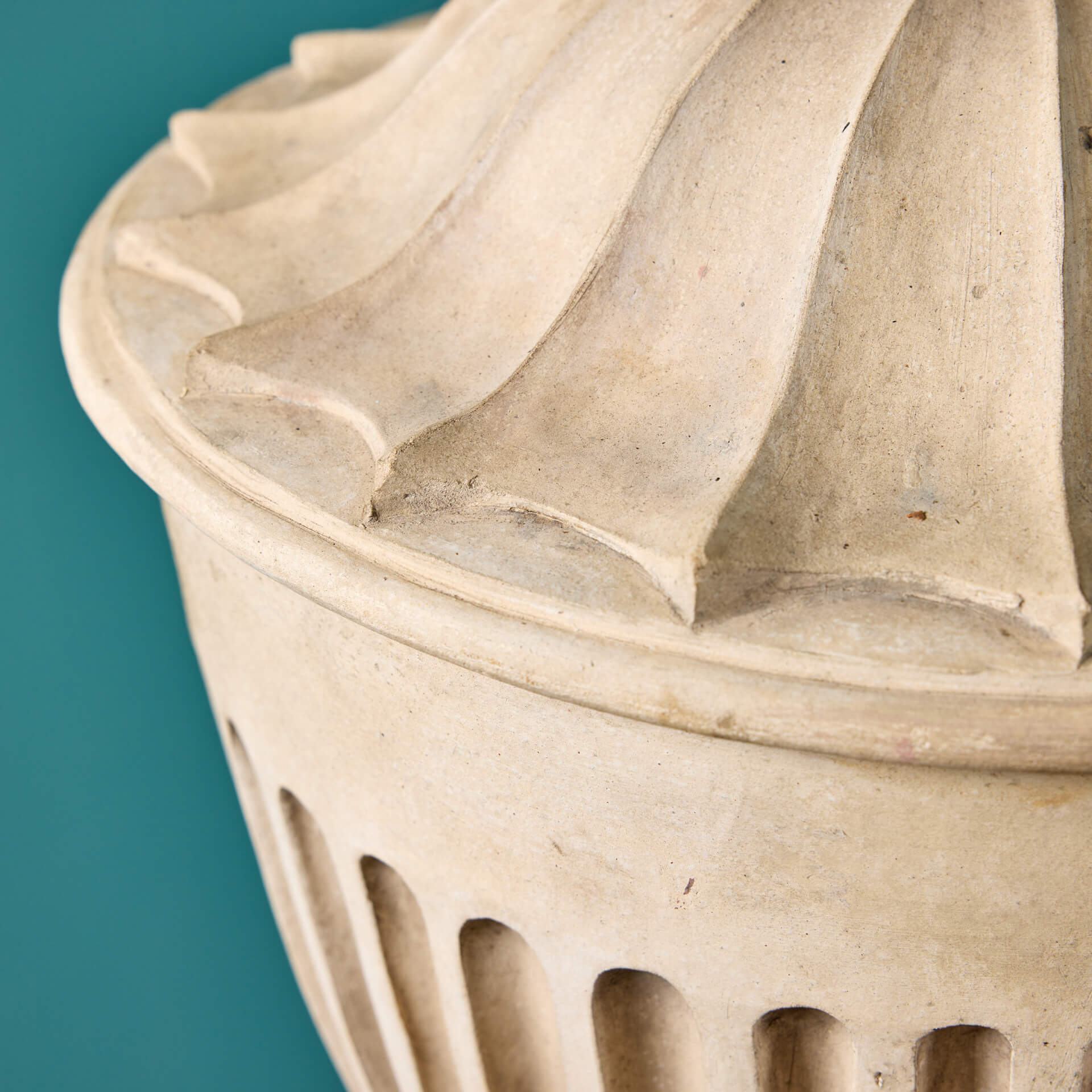
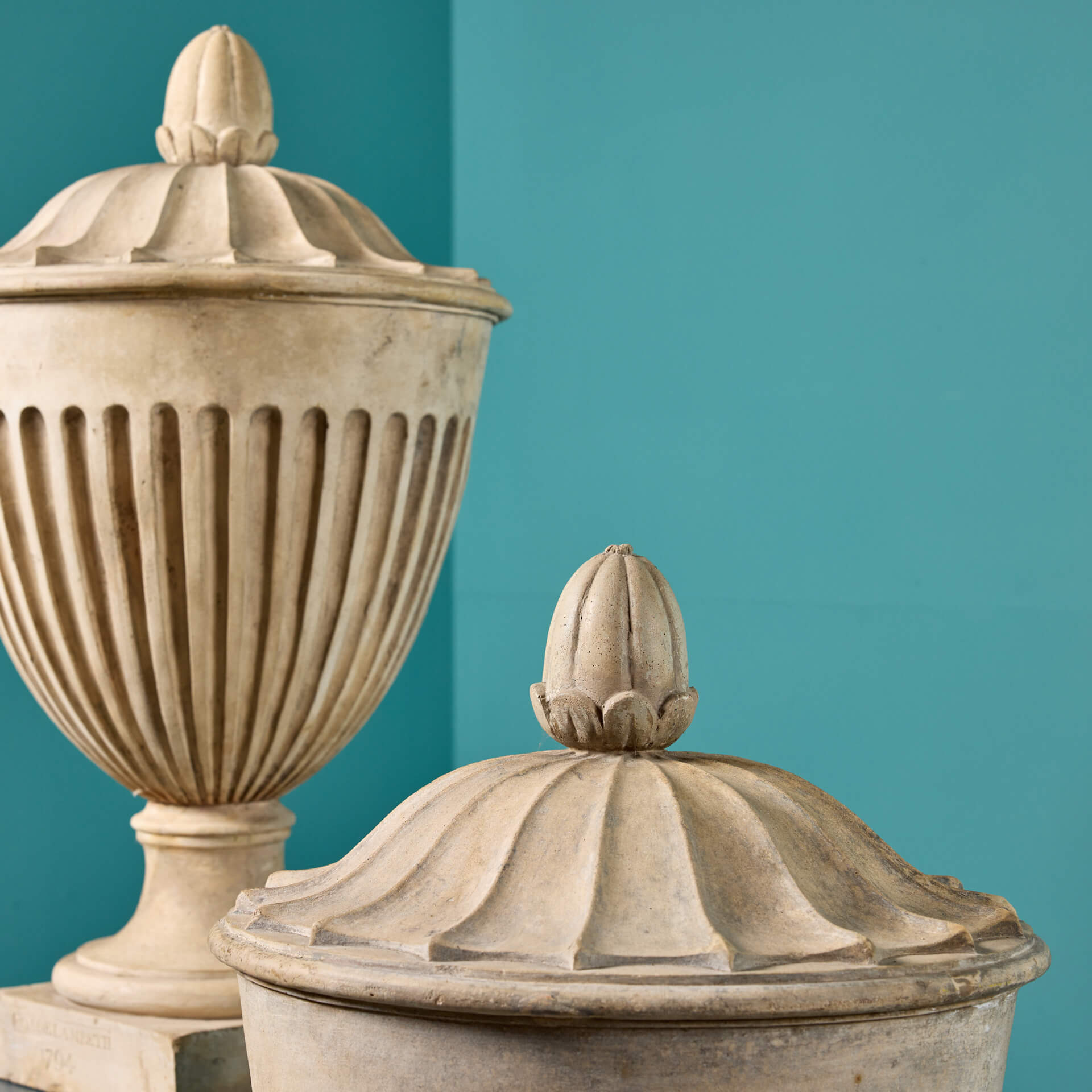
Two George III Coade Stone Urn Finials (Stock No. 31708)
Mrs Coade’s Stone
A History of a Pioneer
Eleanor Coade purchased an ailing business in Lambeth in 1769. This marked her first step into what would become an incredibly successful career in manufacturing. In the 18th century, female innovators such as Coade were incredibly rare. Traditionally, women in the Georgian era were at home, tending to the children and undertaking other domestic duties. If they did foray into the world of employment, it would typically be in areas such as writing domestic guides. One such example was Elizabeth Raffald, who was famous during this period for publishing “The Experienced English Housekeeper”.
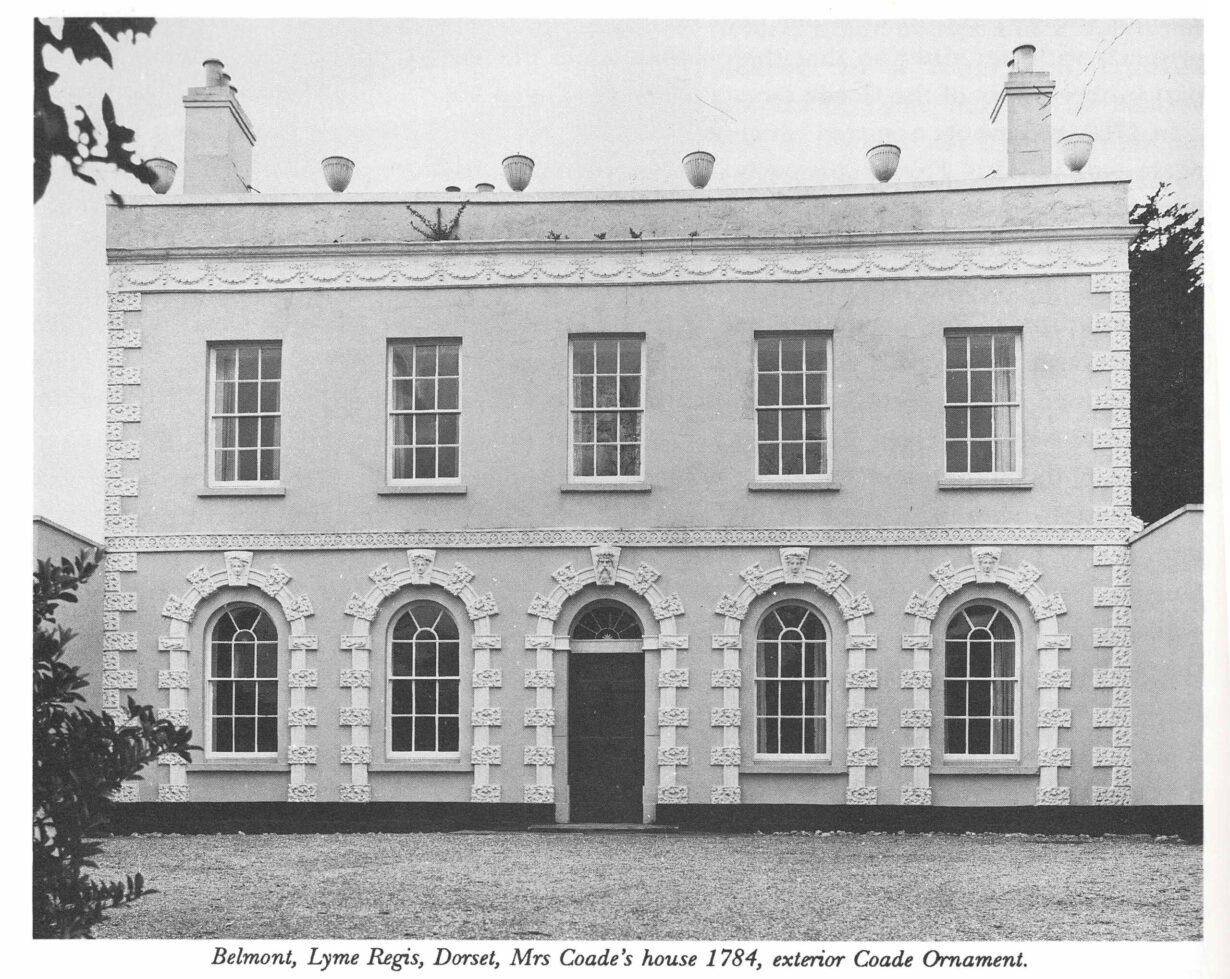
From 1771, Coade employed renowned sculptor John Bacon, reflecting her determination to hire the best craftsmen in Britain. From this point forward, the factory gained a huge reputation for producing high-quality artificial stone (known then as Lithodipyra). Soon, architectural features manufactured in the Coade factory were used on several famous buildings including; the Royal Pavilion in Brighton and the Royal Naval College in Greenwich. One of Bacon’s renowned designs is Mrs Draper’s monument in Bristol Cathedral, which dates from circa 1780.
Here at UK Architectural Heritage we currently have an original sculpture for sale which was carved by Bacon himself. This quality marble bust, depicting Edward John Willes, clearly reflects his impressive skill and precision as a sculpture.
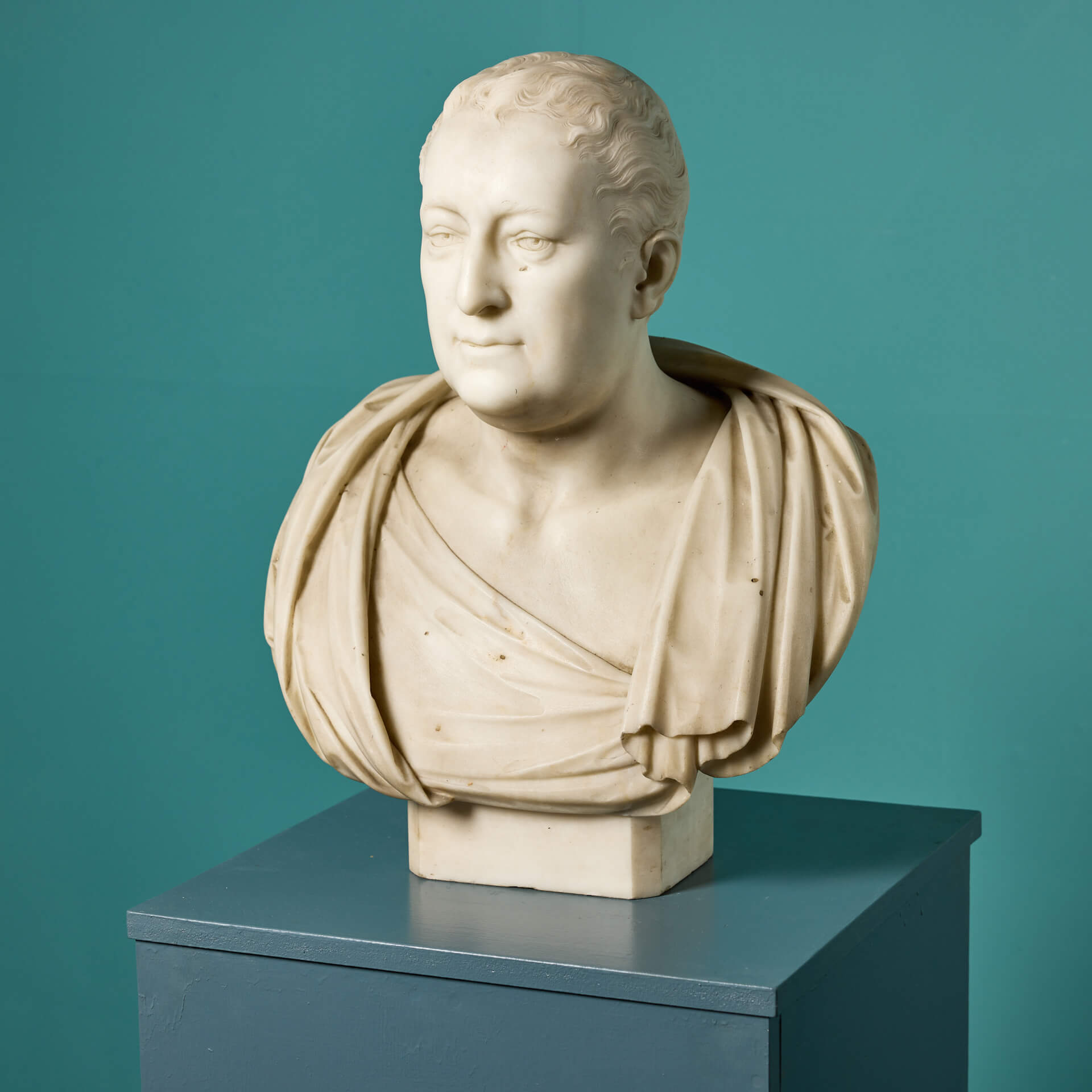
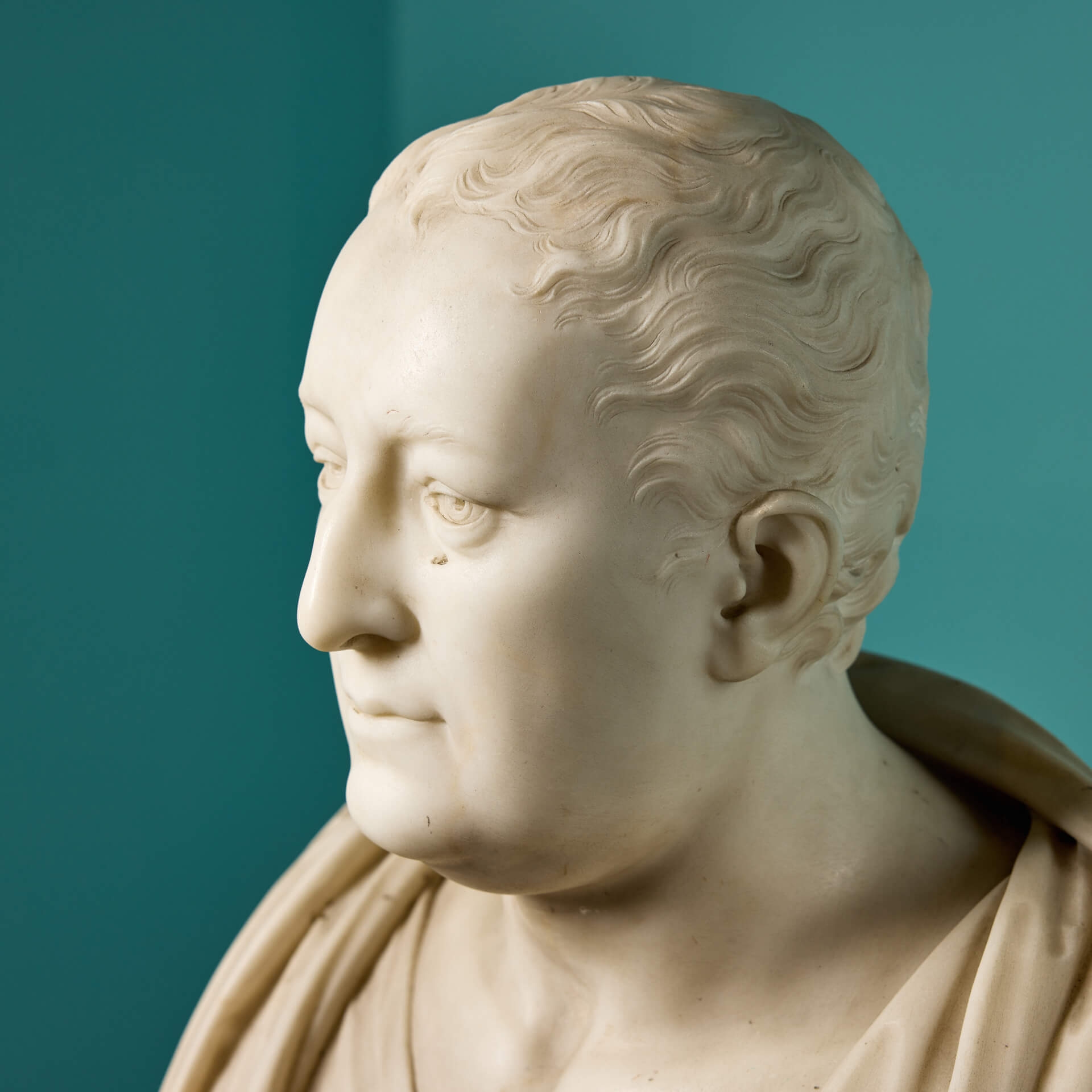
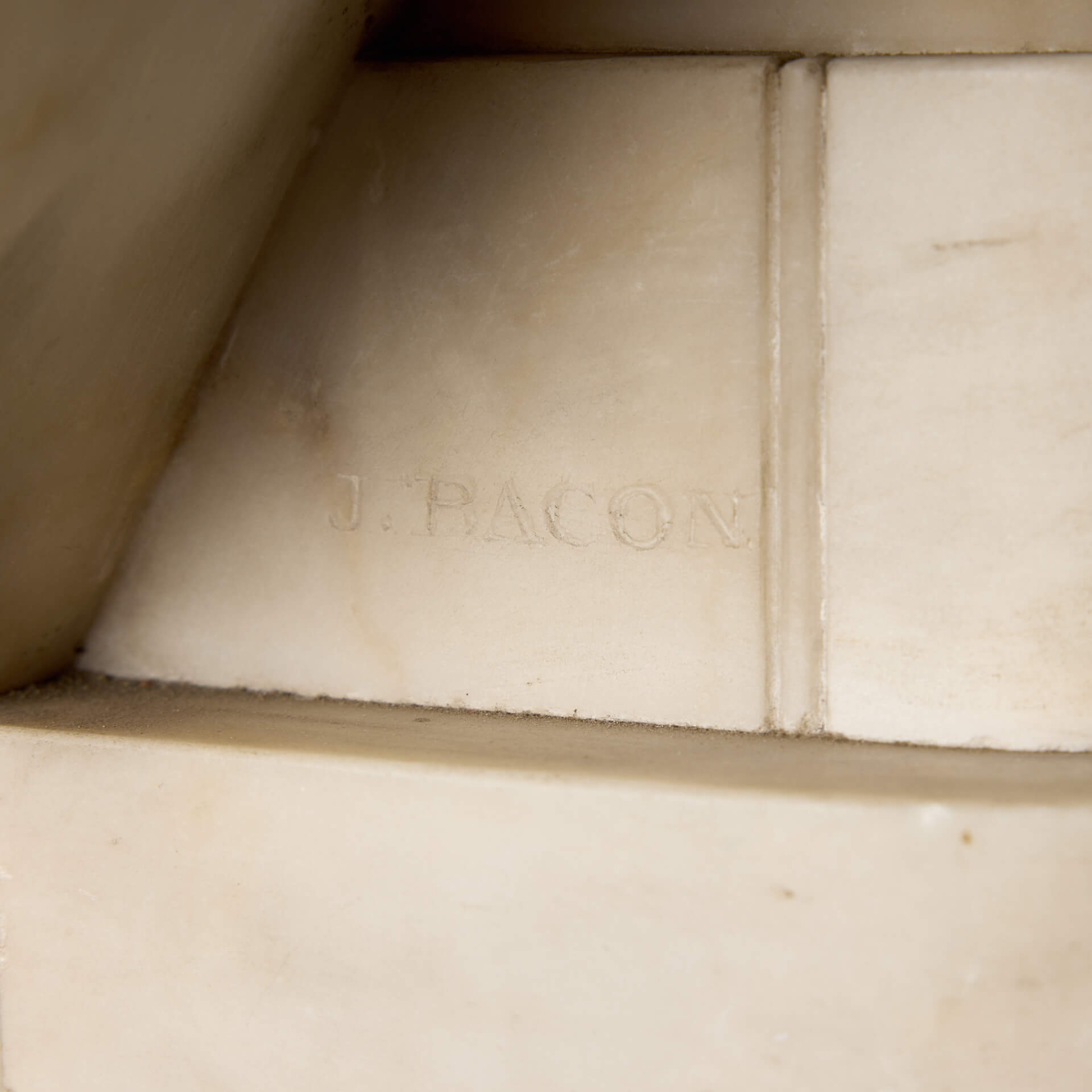
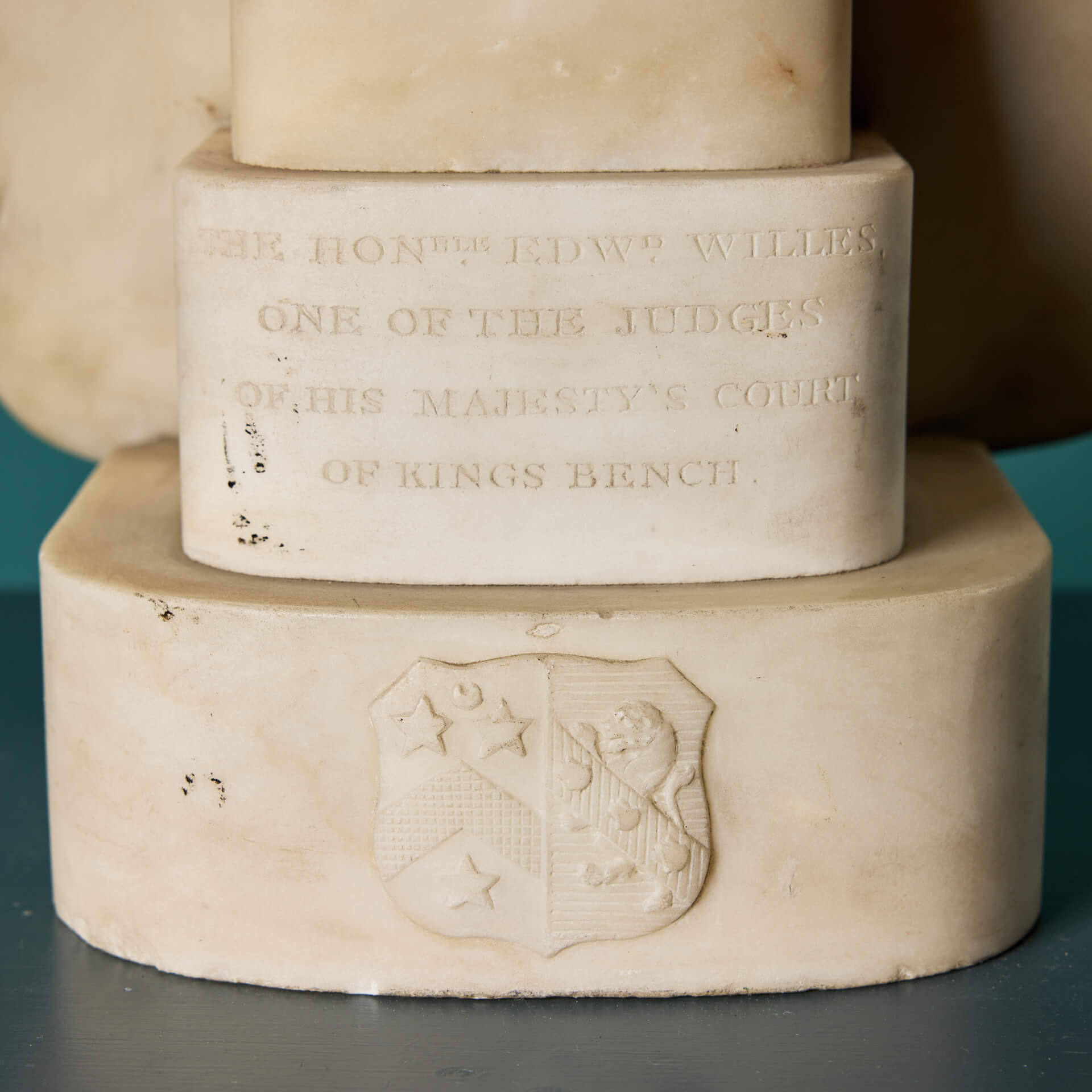
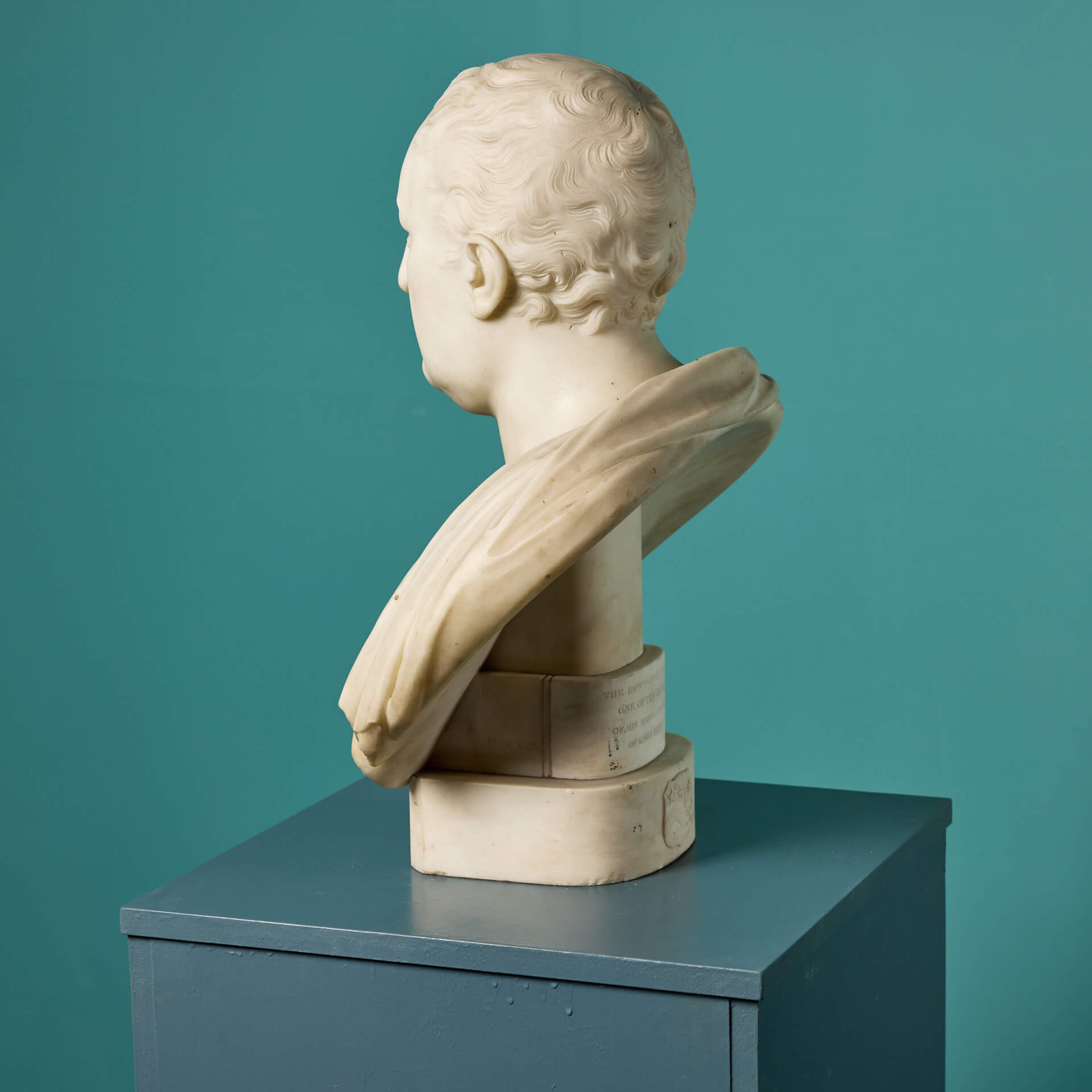
Marble Portrait Bust of Edward Willes by John Bacon (Stock No. 31452)
Our original Coade urns are very similar in appearance to images found in the 1778 ‘Etching of Coade’s Artificial Stone Manufactory’. The urns were one of hundreds of designs that were created in the factory during in the 18thcentury. In fact, Mrs Coade’s own home in Belmont, Lyme Regis, Dorset, is decorated with identical urns on the rooftop.
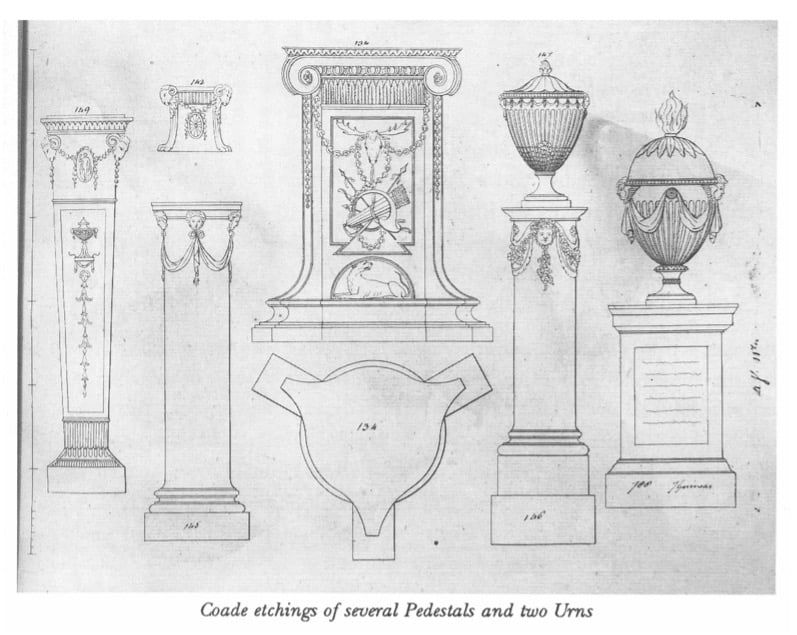
Classical architecture had a burst of popularity during the 1780s and the Coade factory wasted no time in sketching up new designs. As well as planters and urns, the late 18th century saw a huge array of new sculptures, ornaments and architectural details being created. Eleanor Coade was soon approached by a number of architects, requesting delicate and ornate designs including both Sir John Nash and James Wyatt. Wyatt’s designs were even exhibited at the Royal Academy when he was just 26 years old, reflecting his rapid rise to prominence.
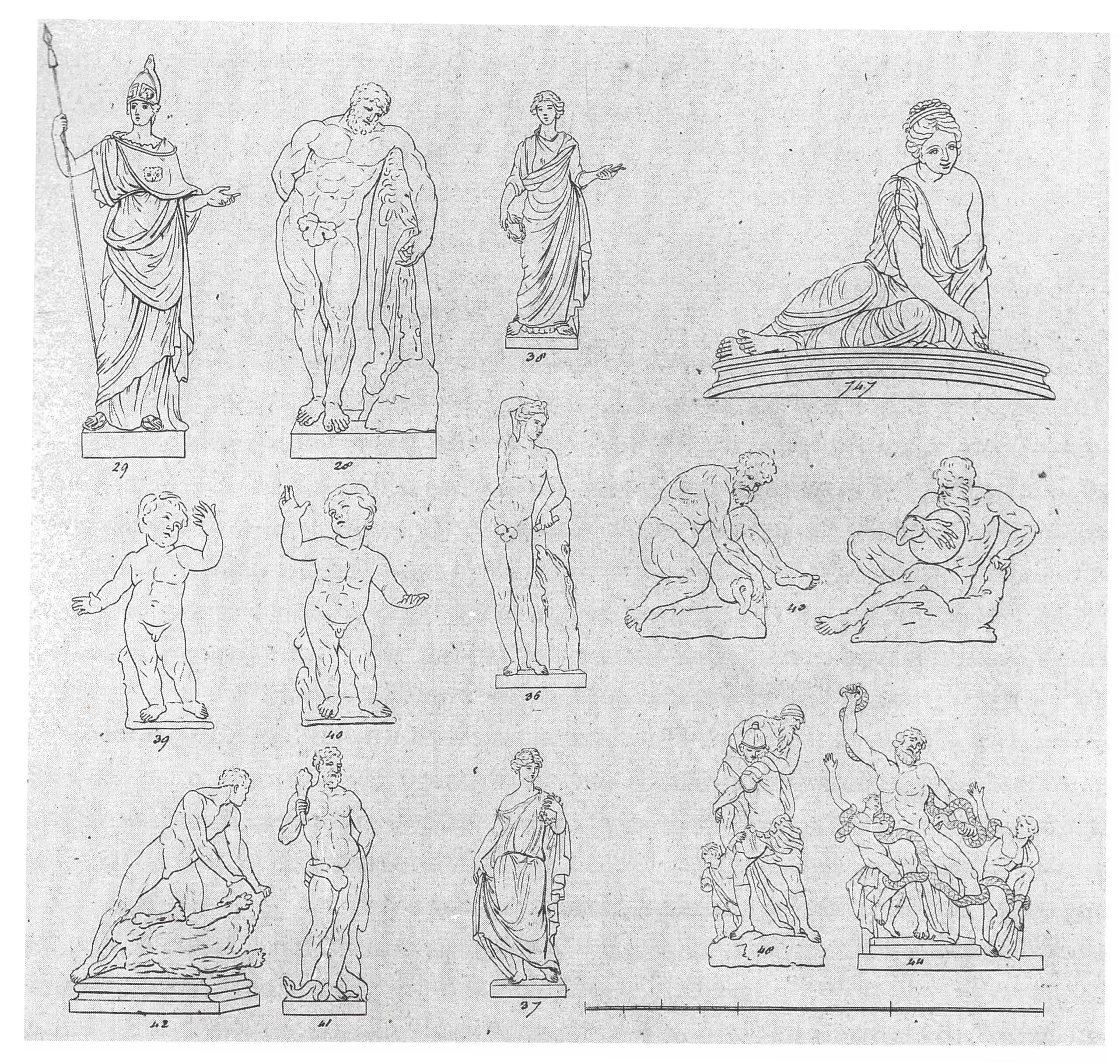
The success of Coade stone made it possible for architects to recreate high quality classical designs as well as producing new ‘modern’ pieces. Furthermore, Coade has many advantages over using more traditional natural stone. Consequently, many pieces and forms made from Coade are virtually impossible to recreate from natural stone. This ultimately is a major reason that the Coade factory experienced such a huge level of success in the late 18th and early 19th centuries. At UK Architectural Heritage we also have a collection of six decorative Coade stone plaques, created for St Olave’s School, London which date to circa 1785. These depict scenes of children being taught in the traditional Georgian style and reflect the versatility of Coade stone.
Eleanor Coade’s company has created a manufacturing legacy of durable stone pieces that have survived the centuries. Consequently, many Coade stone pieces survive all over the UK today as well as in places as far afield as South Africa, Russia and Brazil. She was an extremely pioneering businesswoman, creator and influencer. Coade stone has, in recent years, become re-imagined and reproduced with varying recipes to replicate the brilliant work of Mrs Coade. You can find many Coade pieces that we have to offer on our website.
If you found this blog interesting, be sure to sign up to our mailing list to keep up to date with new stock, blogs and essential information!
